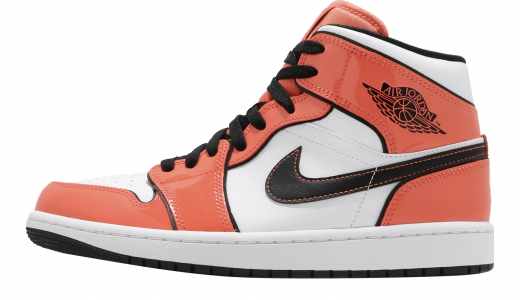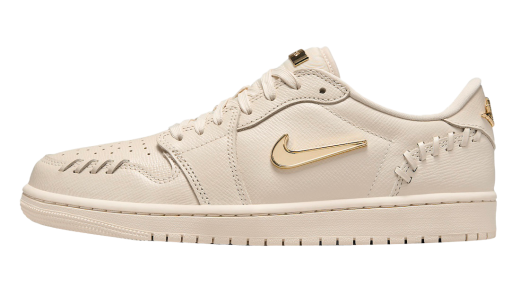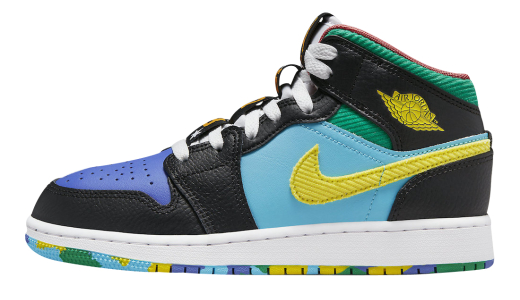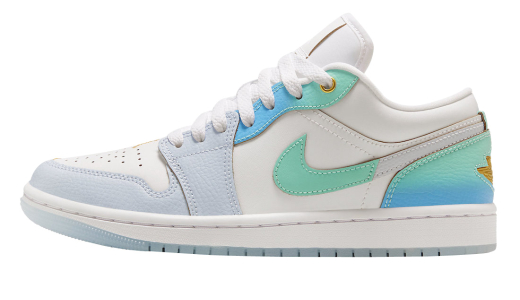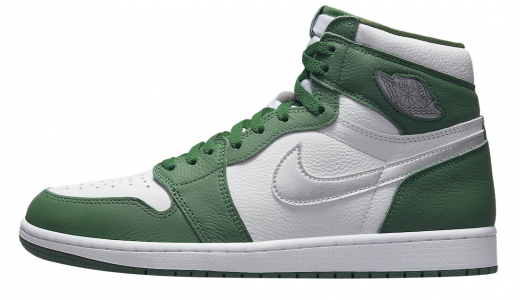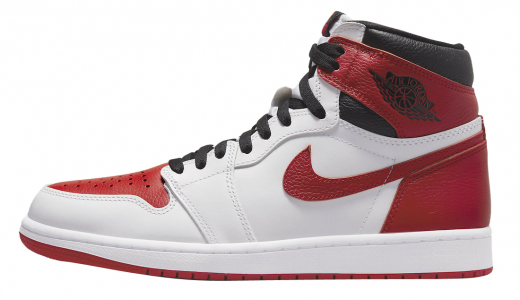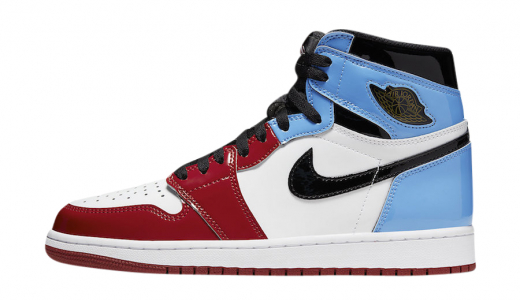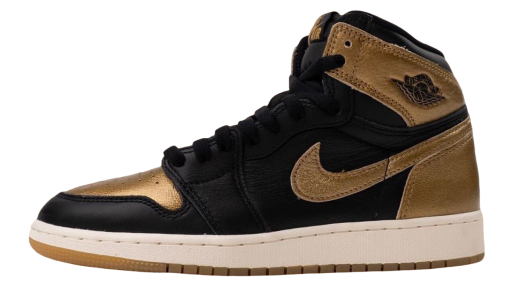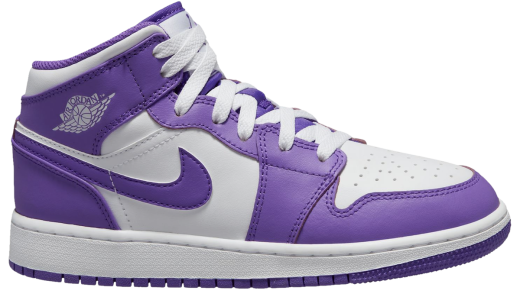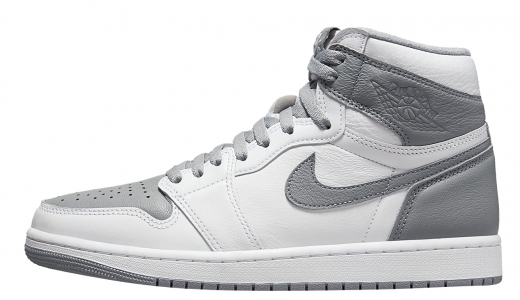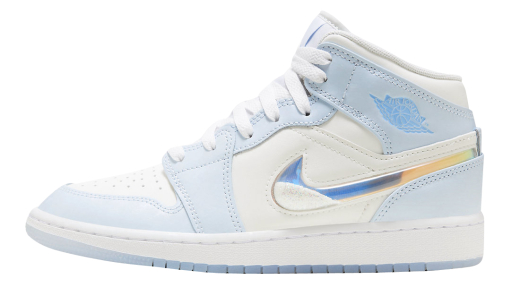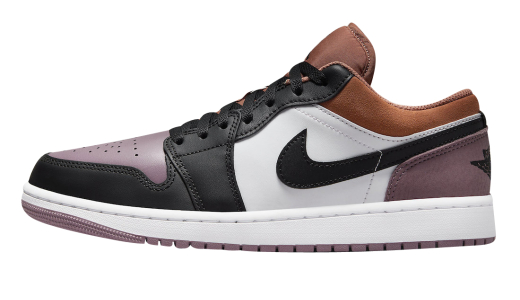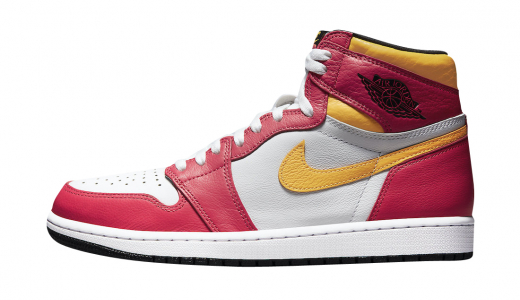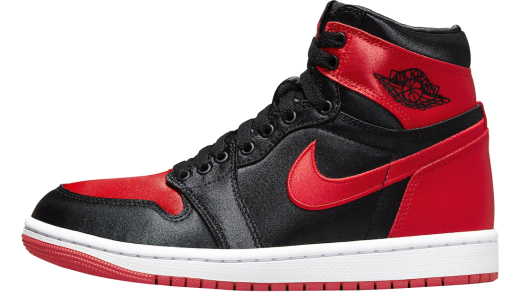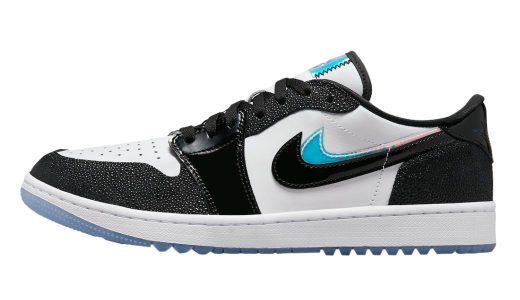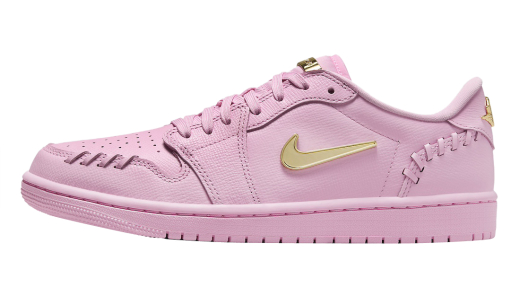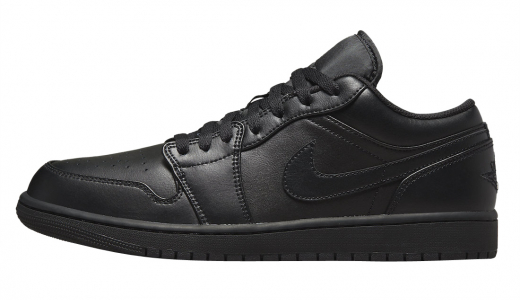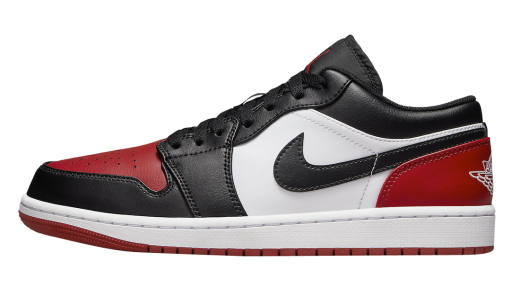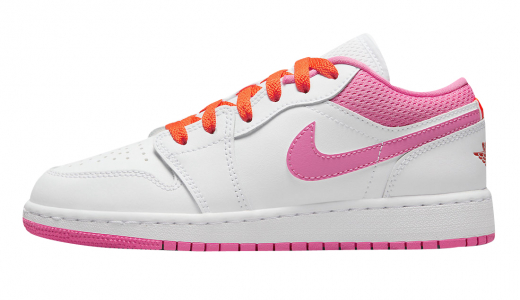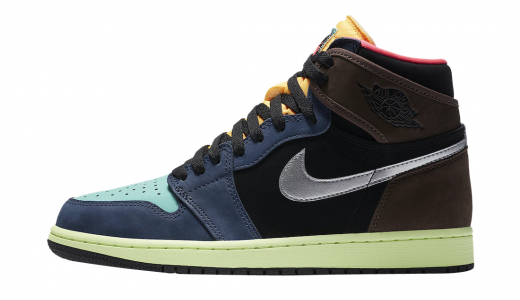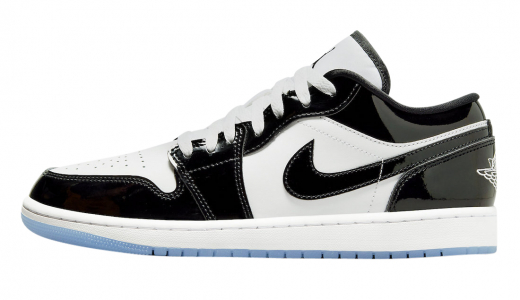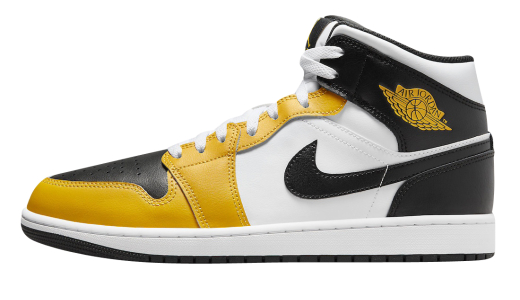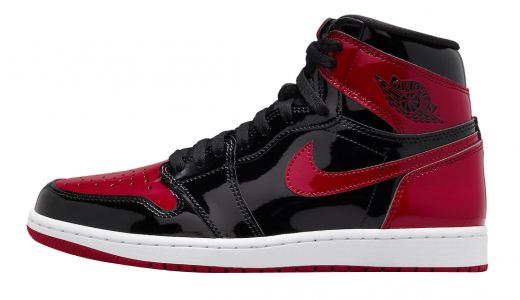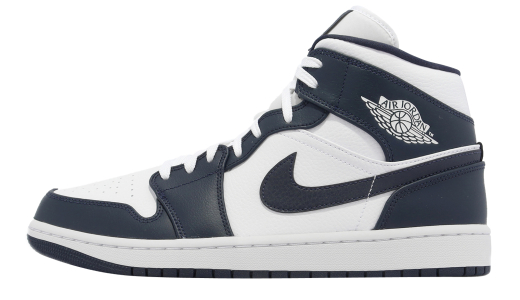Air Jordan 1
The Air Jordan 1 is a classic basketball shoe that was first released in 1985 as Michael Jordan's debut signature sneaker with Nike. Designed by Peter Moore, this iconic footwear not only revolutionized athletic footwear but also transcended sports to become a cultural phenomenon. The original colorway, known as "Bred" (a combination of black and red), instantly attracted attention and controversy. The NBA initially banned the shoe for not adhering to the league's strict uniform code. Nike encouraged this narrative, willingly paying the fines and leveraging the "banned" label as a powerful marketing tool, which only amplified the shoe's allure and mystique among sneaker enthusiasts and fans of Michael Jordan alike.
The Air Jordan 1's influence extends far beyond the basketball court. Its timeless design, highlighted by the Nike "Swoosh" logo and the wings insignia, has made it a staple in streetwear culture. Over the years, the Air Jordan 1 has been released in numerous colorways, collaborations, and special editions, each telling a unique story or paying homage to significant moments in Jordan's career and pop culture. The sneaker remains highly sought after in the collector's market, proving its enduring relevance. Its appeal is not only rooted in its association with Michael Jordan but also in its versatile style that complements various fashion sensibilities. With the Air Jordan 1, Nike set the stage for an entire line of Air Jordan sneakers, each continuing to build on the legacy of innovation, performance, and style.
History of Air Jordan 1
The Air Jordan 1 is more than just a sneaker; it is a cultural phenomenon that has transcended the realm of sports to become an icon of fashion and street culture. Since its inception in 1984, the Air Jordan 1 has left an indelible mark on sneaker culture, sports history, and fashion, remaining a coveted item for collectors and enthusiasts worldwide. This essay delves into the origins, design, cultural impact, and legacy of the Air Jordan 1, providing a comprehensive history of this legendary shoe.
The story of the Air Jordan 1 begins with Michael Jordan, a basketball prodigy whose talent and charisma demanded a stage larger than the game itself. After an illustrious college career at the University of North Carolina, Jordan entered the NBA Draft in 1984, where he was selected third overall by the Chicago Bulls. Nike, at the time, was not the powerhouse it is today in the basketball world. In fact, they were trailing behind established brands like Converse and Adidas. Seeking to make a breakthrough, Nike saw an opportunity in the young and promising Jordan.
Peter Moore, a designer at Nike, was tasked with creating the first signature shoe for Michael Jordan. With a background in graphic design and a history of designing successful athletic shoes, Moore was an ideal choice for this groundbreaking project. The design process was collaborative, taking Jordan's personal style and on-court needs into account. Released in 1985, the Air Jordan 1 featured a high-top silhouette with a bold "Wings" logo and the iconic Nike Swoosh. Its colorway, primarily red, black, and white, was designed to match the Chicago Bulls' uniform—though it also led to one of the most infamous episodes in sneaker history.
The Air Jordan 1’s debut was mired in controversy when the NBA banned the shoe for violating the league's uniform policy, which stated that shoes must be predominantly white. Nike capitalized on this controversy with a now-legendary marketing campaign, framing the shoe as rebellious and empowering. The tagline, "On October 15, Nike created a revolutionary new basketball shoe. On October 18, the NBA threw them out of the game. Fortunately, the NBA can't stop you from wearing them," emphasized the shoe's outlaw status and made it even more desirable.
The “Banned” story turned out to be a stroke of marketing genius. Although the NBA fined Jordan $5,000 each time he wore the shoes, Nike gladly paid the fines, recognizing the immense advertising value. This act of defiance resonated with the youth, positioning the Air Jordan 1 as more than just athletic footwear but as a symbol of rebellion and individuality. The shoe's popularity soared, making it an instant sell-out and giving Nike the foothold they needed in the basketball market.
While the controversy stirred public interest, it was Jordan's electrifying performance on the basketball court that solidified the shoe’s status. Jordan won the NBA Rookie of the Year title in 1985, capturing the imagination of basketball fans everywhere. His high-flying dunks and game-winning shots created a mystique around the player and his shoes. As Jordan moved, scored, and soared, so too did the Air Jordan 1, creating an inseparable link between the athlete and the footwear.
The design of the Air Jordan 1 was a radical departure from the basketball shoes available at the time. While modern sneaker culture might take high-tops and bold colorways for granted, in 1985, these features were groundbreaking. The Air Jordan 1 introduced several elements that would become staples in sneaker design, such as high ankle support, durable leather, and a uniquely styled rubber outsole for improved grip and traction. The shoe not only had style but also provided the performance benefits athletes required, thus bridging the gap between form and function.
The Air Jordan 1 was more than just a commercial success; it became an essential part of the cultural fabric. By the late 1980s, the shoe had transcended its athletic origins to become a staple of street fashion. Hip-hop artists, skateboarders, and fashion icons began adopting the shoe, leveraging its rebellious spirit and versatile design. When considered in conjunction with the rise of basketball’s popularity in mainstream culture, the Air Jordan 1 played a pivotal role in turning sneakers into a fashion statement.
In the years following its initial release, the Air Jordan 1 saw various re-issues and collaborations that each contributed to its enduring legacy. The shoe was re-released in 1994 to celebrate its 10th anniversary, paving the way for subsequent re-releases and colorways. Collaborations with artists, designers, and brands—like the partnerships with Off-White, Travis Scott, and Dior—have kept the Air Jordan 1 relevant in an ever-evolving fashion landscape. These collaborations not only pay homage to the original but also reinvent it, blending contemporary aesthetics with classic design elements.
The Air Jordan 1 also holds a significant place in the history of sports endorsements. Before Jordan, the norm was for athletes to have equipment deals, but Jordan's deal with Nike helped set a precedent where athletes became integral partners in the marketing and design process. This business model has since been emulated by numerous brands and athletes, making the athlete endorsement deal a lucrative and crucial aspect of sports marketing.
As time has passed, the Air Jordan 1 has been immortalized in various forms of media and has found its way into the collections of enthusiasts and celebrities alike. The sneakers have been featured in films, music videos, and even art exhibitions, further entrenching their status as a cultural icon. They are also a staple at sneaker conventions and are one of the most sought-after items in the resale market, often fetching exorbitant prices.
To understand the full impact of the Air Jordan 1, it’s essential to look beyond sales numbers and market trends, focusing instead on the intangible. The shoe has become a symbol of excellence, aspiration, and individuality. Its association with Michael Jordan’s career—a timeline marked by numerous accolades including multiple NBA championships, MVP awards, and a lasting legacy that extends beyond the court—serves to elevate the shoe's narrative.
Another aspect of the Air Jordan 1’s evolution is its global influence. What began as an American phenomenon quickly spread worldwide, appealing to diverse cultures and spawning various local adaptations. The Air Jordan 1 is now as likely to be seen on the streets of Tokyo, Paris, and London as it is in Chicago or New York. This global reach speaks volumes about the shoe’s universal appeal and its ability to resonate across different cultural contexts.
The Air Jordan 1 has also played a critical role in the rise of sneaker culture, a subculture that binds people through a shared passion for footwear. Sneakerhead communities have formed around the world, creating a vibrant marketplace for buying, selling, and trading rare and iconic sneakers. Air Jordans often feature as centerpieces in these collections, testifying to the sustained demand and reverence for the first-ever Jordans.
In recent years, the sneaker industry has witnessed a boom in sustainability efforts, and the Air Jordan 1 has not been left behind. Nike has explored eco-friendly materials and manufacturing processes, reflecting a shift in consumer consciousness and an emphasis on sustainable fashion. The timeless design of the Air Jordan 1 offers an avenue for the brand to innovate while staying true to the original aesthetic.
The story of the Air Jordan 1 is a blend of ingenuity, marketing brilliance, and cultural synergy. From its controversial beginnings to its status as a global icon, the shoe's journey is a remarkable testament to its enduring appeal and profound impact on culture and commerce. Each new release, collaboration, and colorway breathes new life into a design that has remained largely unchanged yet remarkably relevant for almost four decades.
In summing up the history of the Air Jordan 1, it is clear that its influence extends far beyond the hardwood. It is an enduring piece of cultural history, representing not just the achievements of Michael Jordan, but also the collective aspirations of those who wear and adore it. As the sneaker world continues to evolve, the Air Jordan 1 stands as a timeless beacon, a reminder of a revolution that began with a single shoe—and the extraordinary impact it has had, continues to have, and will likely maintain for years to come.
